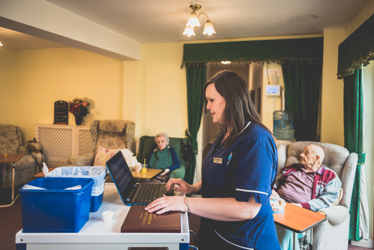Blog - Page 1

Common Problems with Care Home Software and How to Avoid Them
Read Article on Common Problems with Care Home Software and How to Avoid Them
TEC Elderly Care Home Monitoring Systems
Read Article on TEC Elderly Care Home Monitoring Systems
Data Fragmentation in Care Homes and Nursing Homes
Read Article on Data Fragmentation in Care Homes and Nursing Homes
Care Governance and Its Dependency on Care Planning
Read Article on Care Governance and Its Dependency on Care Planning
What is Innovation in Care?
Read Article on What is Innovation in Care?
Mastering Digital Governance in Care
Read Article on Mastering Digital Governance in Care
Care Planning Tools and How to Use Them
Read Article on Care Planning Tools and How to Use Them
How Can AI Automation in Care Help Streamline Business
Read Article on How Can AI Automation in Care Help Streamline Business
The 5 R’s of Medication Explained
Read Article on The 5 R’s of Medication Explained
Empowerment in Health and Social Care
Read Article on Empowerment in Health and Social Care
How Access Care Employee Mobile App Supports Work-Life Balance
Read Article on How Access Care Employee Mobile App Supports Work-Life Balance
Independent Care Solutions
Read Article on Independent Care Solutions
How Can Care Management Software Help with Body Mapping
Read Article on How Can Care Management Software Help with Body Mapping
Medication errors in care homes
Read Article on Medication errors in care homes
Medication Errors and How to Prevent Them
Read Article on Medication Errors and How to Prevent Them
Streamline Care with Access Software Discounts
Read Article on Streamline Care with Access Software Discounts
How Care Homes Are Reclaiming Time for Care Teams
Read Article on How Care Homes Are Reclaiming Time for Care Teams
Digital Care Planning Software: What it is and How to Choose One
Read Article on Digital Care Planning Software: What it is and How to Choose One
Care Tutor vs My Learning Cloud vs Access Learning for Care
Read Article on Care Tutor vs My Learning Cloud vs Access Learning for Care
Equality and Diversity in Health and Social Care
Read Article on Equality and Diversity in Health and Social Care
Confidentiality in Health and Social Care
Read Article on Confidentiality in Health and Social Care
HSC - Practical Cost-Saving Advice for Staying on Top of Compliance in Care
Read Article on HSC - Practical Cost-Saving Advice for Staying on Top of Compliance in Care
Should I Aim for Outstanding – What are the Costs and Benefits?
Read Article on Should I Aim for Outstanding – What are the Costs and Benefits?
Technology in Care Homes
Read Article on Technology in Care Homes
How AI Can Transform Your Care Planning Process
Read Article on How AI Can Transform Your Care Planning Process
Reflective Practice in Health and Social Care
Read Article on Reflective Practice in Health and Social Care
Effective Communication in Health and Social Care
Read Article on Effective Communication in Health and Social Care
How to Become a Registered Care Manager
Read Article on How to Become a Registered Care Manager
Care Coordination Software for Providers
Read Article on Care Coordination Software for Providers

 AU & NZ
AU & NZ
 SG
SG
 MY
MY
 US
US
 IE
IE